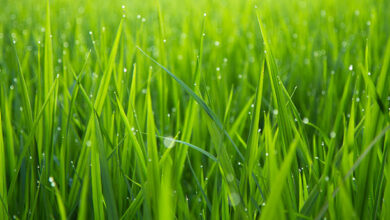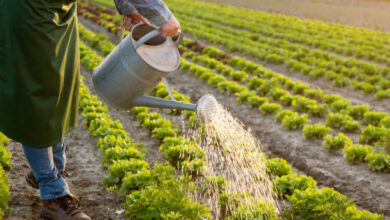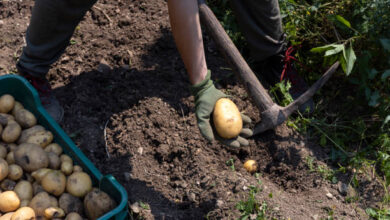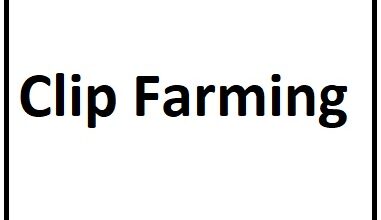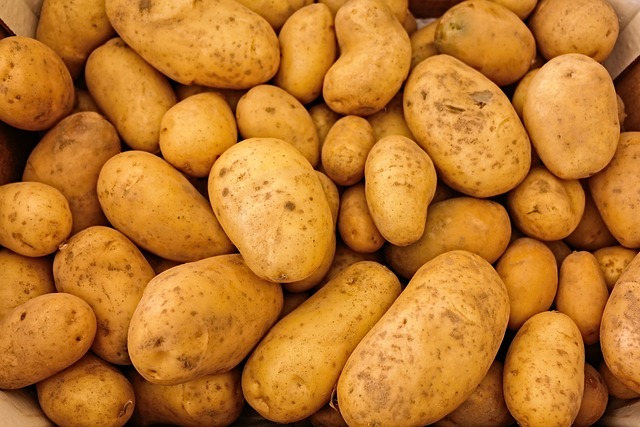
When to Plant Potatoes in Texas: The Ultimate Guide.
Potatoes are a staple in many diets, and growing your own can be incredibly rewarding. But when is the best time to plant potatoes in Texas? Knowing the right time to plant ensures a bountiful harvest and avoids the pitfalls of the Texas climate. Let’s go into the details and find out when to plant potatoes in Texas for optimal growth and yield.
Understanding Texas Climate and Growing Zones
Texas boasts a diverse climate, ranging from arid deserts in the west to humid subtropical regions in the east. This diversity is captured in its USDA hardiness zones, which vary from 6a to 9b. These zones reflect temperature variations that can significantly impact your planting schedule. It’s crucial to know your specific zone to determine the best planting time.
Texas USDA hardiness zones: 6a to 9b.
Texas’s vast landscape is divided into several USDA hardiness zones, ranging from 6a to 9b. Understanding these zones is crucial for gardeners, as they indicate the climatic conditions of different regions, specifically the average annual minimum winter temperature. Here’s a breakdown of what each zone means and how it affects potato planting:
– Zone 6a (Northwestern Texas, including parts of the Panhandle)
– Temperature Range: -10°F to -5°F (-23°C to -21°C)
– Characteristics: This zone experiences colder winters and shorter growing seasons compared to other parts of Texas. Frost dates can extend into late spring and begin early in the fall.
– Planting Time: Potatoes should be planted as soon as the soil can be worked in early spring, typically late February to early March. Fall planting is also an option, usually in late August to early September, to take advantage of cooler temperatures before the first frost.
– Zone 7a and 7b (Central Texas, including parts of Dallas and Fort Worth)
– Temperature Range: 0°F to 10°F (-18°C to -12°C)
– Characteristics: This zone has moderate winters and a longer growing season than Zone 6. The risk of frost diminishes by mid-March.
– Planting Time: The ideal planting time for potatoes is late February through March. In some areas, a second planting in late summer (August) can yield a fall harvest.
– Zone 8a and 8b (Southern and Eastern Texas, including Houston and Austin)
– Temperature Range: 10°F to 20°F (-12°C to -6°C)
– Characteristics: Milder winters and longer growing seasons characterize this zone. Frosts are rare and usually limited to brief periods in the winter.
– Planting Time: Potatoes can be planted from mid-February through March. The long growing season allows for a second planting in August for a fall harvest.
– Zone 9a and 9b (Far South Texas, including the Rio Grande Valley and Corpus Christi)
– Temperature Range: 20°F to 30°F (-6°C to -1°C)
– Characteristics: These zones have very mild winters and the longest growing seasons in Texas. Frost is uncommon and, when it occurs, typically does not last long.
– Planting Time: Planting can start as early as January and extend through February. A fall crop can also be planted in September to take advantage of the extended growing season.
How Hardiness Zones Affect Potato Planting in Texas
– Temperature Sensitivity: Potatoes are sensitive to frost, so planting times must be carefully aligned with the expected frost dates of each zone. Planting too early can expose young plants to frost damage while planting too late can shorten the growing period needed for tubers to develop fully.
– Soil Temperature: Potatoes prefer soil temperatures between 45°F and 55°F (7°C to 13°C) for optimal sprouting. Knowing your hardiness zone helps determine when the soil will reach this temperature range.
– Regional Variations: Texas’s large size means that even within the same hardiness zone, microclimates can affect planting times. Local factors such as elevation, proximity to water bodies, and urban heat islands can influence temperatures and growing conditions.
Optimal Planting Time for Potatoes in Texas
The region’s climate influences the best time to plant potatoes in Texas. Generally, late winter to early spring is ideal, but let’s break it down further:
– General planting times: Late winter to early spring.
– Specific months: February to March for most regions.
– Fall planting: August to September in cooler regions like the Panhandle.
Incorporating an infographic or chart can visually guide you through the planting times specific to your region.
Preparing Your Garden for Planting
Proper preparation of your garden bed is essential for a successful potato crop. Here are the steps to get your garden ready:
– Soil preparation: Test your soil’s pH and add compost to enrich it.
– Well-drained, loose soil: Potatoes thrive in loose, well-drained soil.
– Preparing seed potatoes: Cut the seed potatoes into pieces, each with at least one eye, and let them cure for a few days to prevent rot.
Planting and Caring for Potatoes
Planting potatoes and caring for them correctly will ensure a healthy crop:
– Planting depth and spacing: Plant seed potatoes 4 inches deep and 12 inches apart.
– Watering schedules: Water regularly, ensuring the soil is moist but not waterlogged.
– Pests and diseases: Watch for common pests like the Colorado potato beetle and diseases such as blight.
Additional tips:
– Mulching and hilling: Mulch to retain moisture and hill the soil around the stems as the plants grow to encourage more tuber production.
Harvesting Potatoes in Texas
Knowing when and how to harvest your potatoes is the final step to a successful crop:
– Signs of readiness: The foliage will turn yellow and die back when the potatoes are ready to harvest.
– Harvesting techniques: Carefully dig up the tubers to avoid damaging them.
– Post-harvest storage: Cure the potatoes in a cool, dark place for a few days before storing them in a well-ventilated, cool, dark area.
READ ALSO: What Planting Zone is Missouri? Your Guide to Gardening Success
READ ALSO: WHAT DOES CALCIUM DO FOR PLANTS
Conclusion
understanding your climate, optimal planting times, proper garden preparation, and effective planting and harvesting techniques—you can ensure a successful potato crop in Texas.
Share your potato planting experiences in the comments below or share this post on social media to help fellow gardeners.

